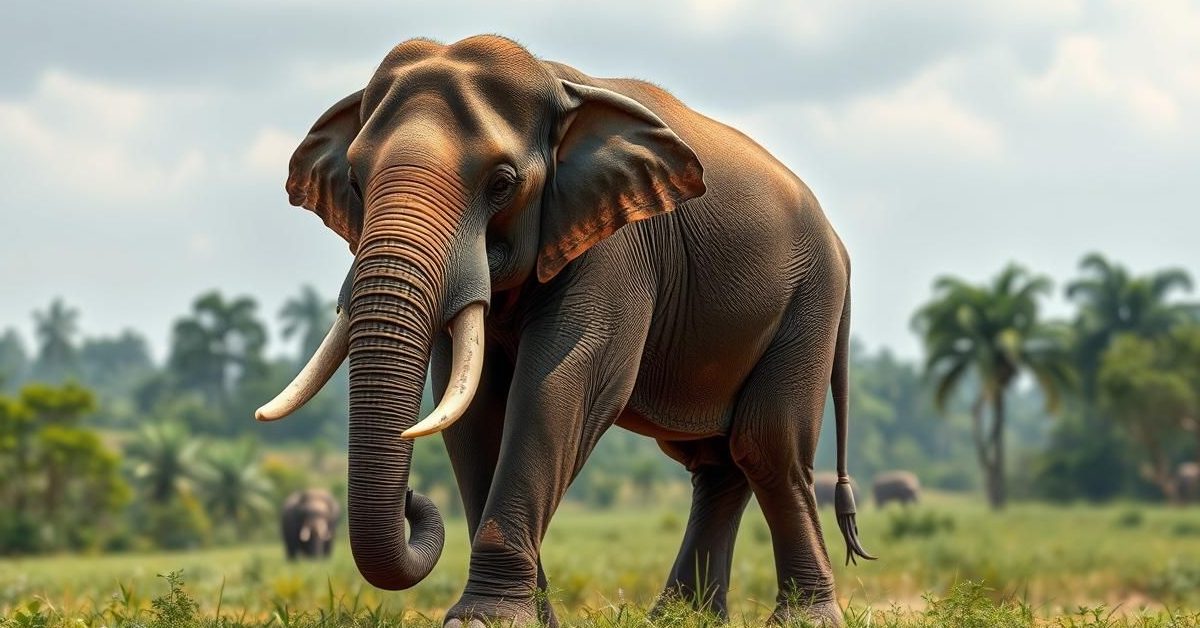Elephants have long been a powerful symbol of wealth and might in Indian culture, deeply woven into its history, mythology, and statecraft.
Ancient Roots and Early Domestication
Our journey with elephants in India dates back to ancient times, with their images even found on Harappan seals. Initially, these were likely wild animals or young ones kept in enclosures.
In early Vedic texts, they were known as “hasti-mriga” or “wild elephants with a hand” (trunk). True domestication began in the late Vedic period, transforming them into valuable assets. Kings, like those of Anga, started gifting elephants to individuals who performed important rituals, signifying their growing importance.
Symbols of Power, Prosperity, and Sensuality
Elephants are intrinsically linked with power, wealth, and even sensuality. Early images of Lakshmi, the goddess of prosperity, show her flanked by elephants pouring water over her, emphasizing their connection to abundance.
For ancient merchants, elephants were invaluable. Their strength and sure-footedness allowed them to carry vast amounts of goods, creating paths through dense jungles and across challenging terrains.
Mythology also portrays elephants in powerful ways. In Buddhist tales, Buddha tames a wild elephant sent to harm him. Hindu myths depict Krishna defeating a royal elephant and Shiva as Gajantaka, dancing on an elephant demon’s head, draped in its hide (Gaja-charma).
The fluid secreted by elephants in musth (intense arousal) is called “mada,” a term also linked to intoxication and uncontrolled passion. Overcoming an elephant or its wild nature was seen as a symbol of conquering such potent forces.
Strategic Assets in Warfare and Royalty
Historical records, like those from the Udayagiri caves, show depictions of elephant herds and hunts. Regions were known for their “Gajapatis” (kings with elephant armies) who contended with “Ashvapatis” (kings with cavalry).
Chanakya’s Arthashastra even encouraged kings to maintain forests for elephant breeding, highlighting their strategic value. While killing elephants was frowned upon, collecting tusks from deceased ones was rewarded.
An ancient folklore hero, Udayana, was famed for his ability to charm elephants with music. A king, seeking to capture him, famously used an artificial wooden elephant to get close, echoing the Greek myth of the Trojan horse.
Celestial Beings: Airavata and Dig-gajas
Later Hindu traditions connect elephants to Indra, the king of gods. While initially depicted on a horse-drawn chariot, Indra later rides Airavata, a magnificent white elephant with multiple trunks and tusks, believed to have emerged from the ocean of milk.
Airavata is not alone; “Dig-gajas,” or elephants of the directions, are believed to stand at the cardinal and ordinal points, holding up the sky. This celestial connection extends to Ganesha, Shiva’s elephant-headed son, often depicted with a white head, especially in eastern India, symbolizing his divine origin from Airavata.
Foundations of Empires and Cultural Contrasts
Elephants are native to India, unlike horses, which were imported. Access to these powerful animals was a key factor in the rise of early empires, notably Magadha. Ancient texts contrast horse-riding kings from Northwest India with elephant-riding rulers from the Magadha region.
Even when the Mughals arrived, they were fascinated by elephants. While horses offered more discipline in battle, Indian royalty consistently preferred elephants. They served as mobile battering rams, crucial for breaching forts, until cannons revolutionized warfare about 500 years ago, shifting the elephant’s role to a more ceremonial one.
The stark difference in cultural attitudes towards elephants between India and ancient China is notable. Chinese emperors, despite elephants existing in their southern regions, largely saw them as wild and unruly, eventually hunting them to extinction to clear land for farming. This highlights India’s unique and profound bond with these majestic creatures.
- Elephants in India symbolize wealth, power, and sensuality, appearing across ancient texts and art from the Harappan era onwards.
- Their domestication was pivotal for the rise of powerful empires like Magadha, serving as strategic military assets.
- They hold significant roles in Hindu, Buddhist, and Jain mythologies, including celestial beings like Indra’s Airavata and the elephant-headed god Ganesha.
- The cultural integration of elephants in India stands in contrast to ancient China’s, where they were largely disregarded and eventually eradicated.
From ancient battlefields to divine narratives, the elephant’s enduring presence continues to shape the rich tapestry of Indian culture and heritage.















